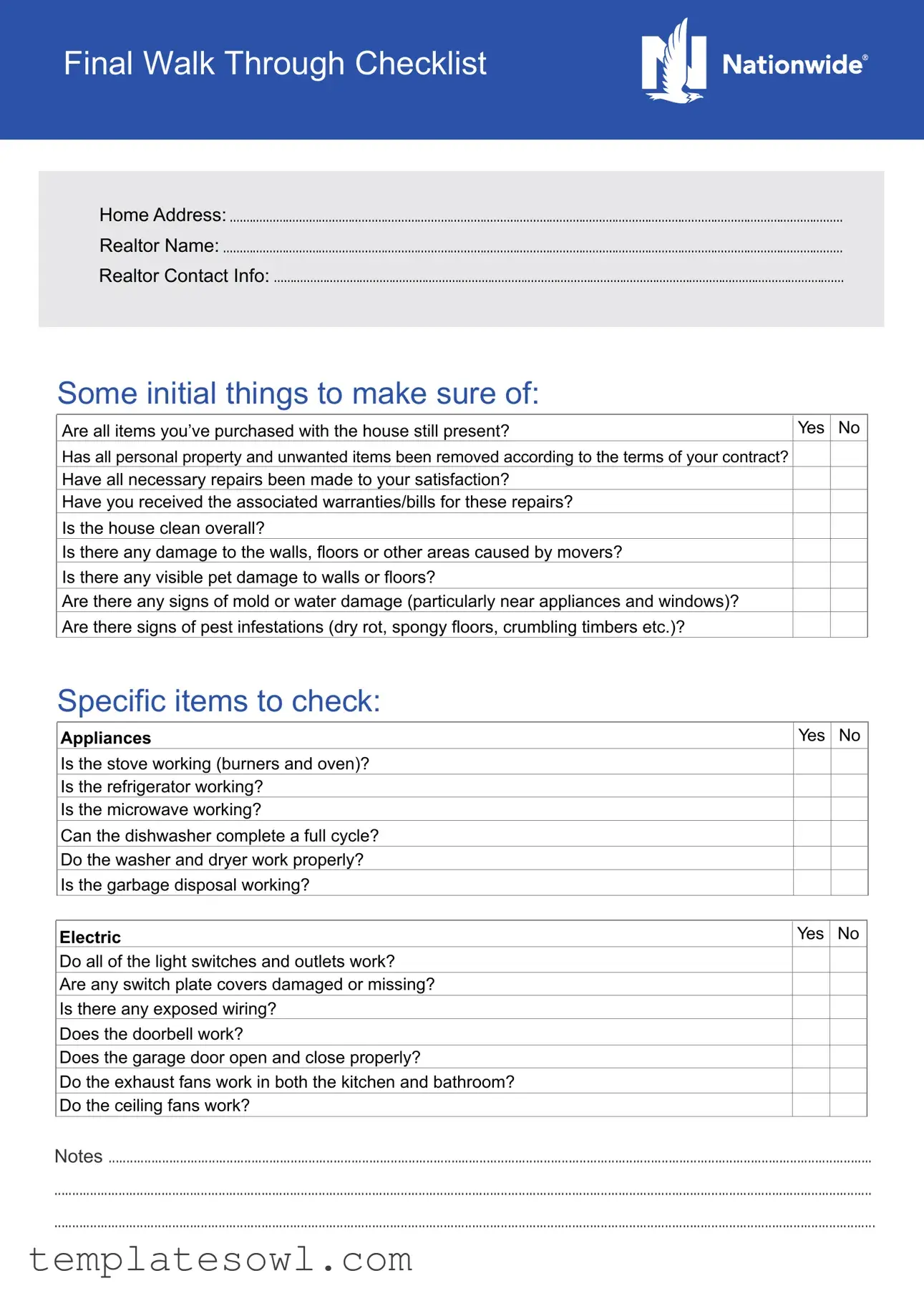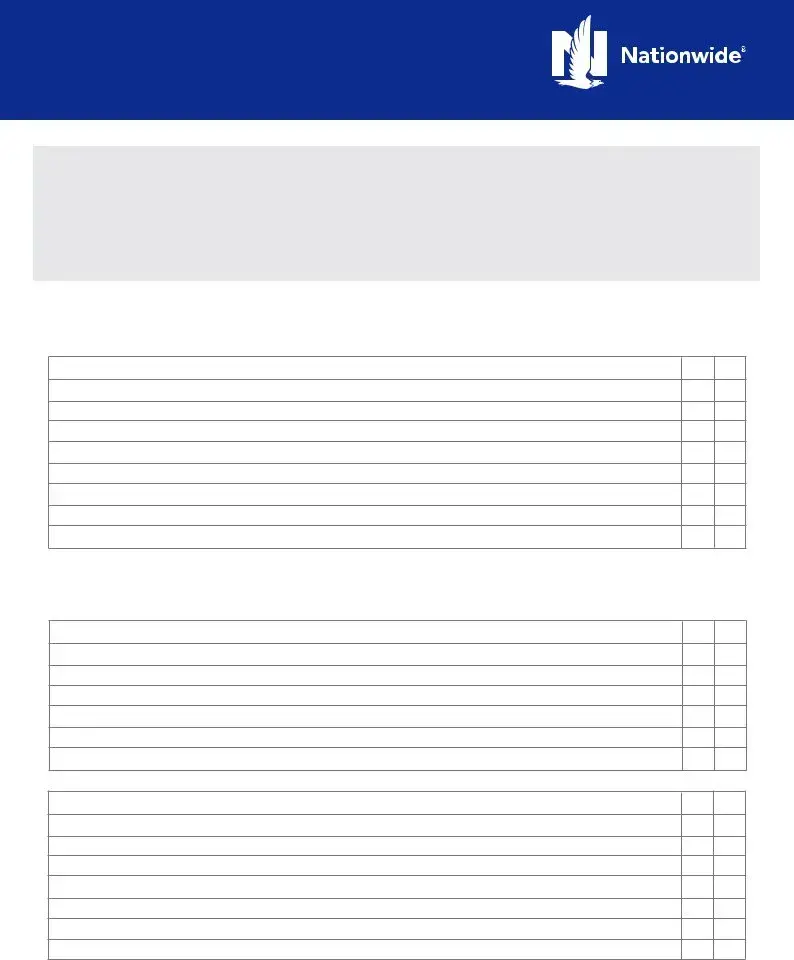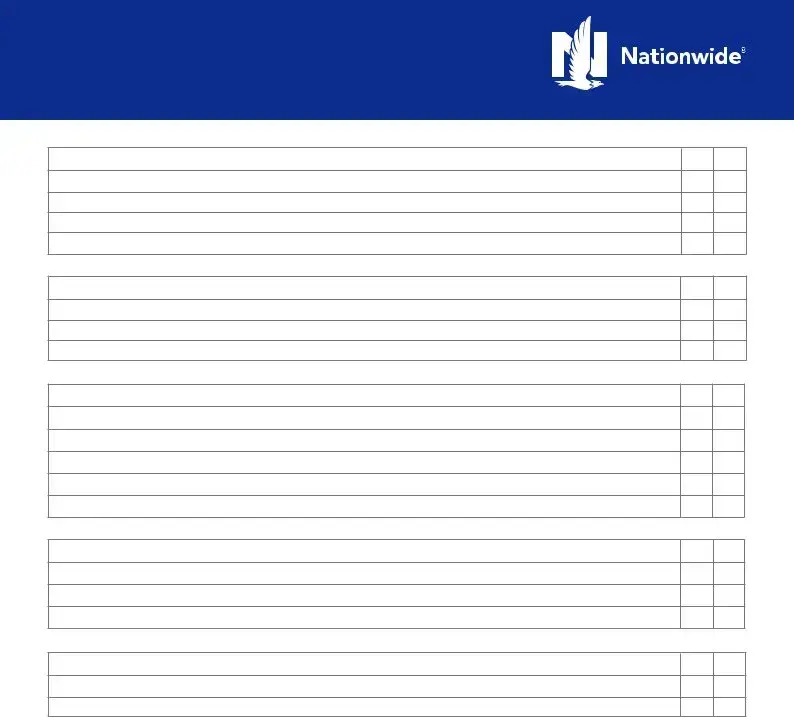What is the Final Walk Through Checklist form?
The Final Walk Through Checklist form is a detailed guide designed for buyers to ensure that a home meets their expectations before closing on the sale. It covers essential aspects such as the condition of the property, the presence of agreed-upon items, and the functionality of appliances and systems. This checklist serves as a roadmap for buyers to verify that everything is in order, promoting a smoother transition into their new home.
Why is the Final Walk Through important?
The Final Walk Through is crucial because it gives buyers the opportunity to confirm that the property is in satisfactory condition and adheres to the terms of the purchase agreement. It helps identify any issues that might require attention before finalizing the sale. This step can prevent unexpected surprises post-closing, such as repairs that have not been completed or items that were supposed to remain with the house but are missing.
What should I check during the Final Walk Through?
During the Final Walk Through, buyers should check several key areas. Make sure all appliances, like the stove and refrigerator, are functioning correctly. Inspect for any signs of damage to walls or floors, and look for issues related to plumbing and HVAC systems. Additionally, examine windows and doors to ensure they operate smoothly and check the outdoor areas for landscaping as you remembered. Use the checklist as a guide to ensure no detail is overlooked.
What if I find issues during the Final Walk Through?
If issues arise during the Final Walk Through, it's important to communicate them to your realtor immediately. Depending on the severity of the problem, you may need to negotiate repairs or contingencies with the seller before proceeding with the closing. Document all concerns on your checklist, and make sure they are addressed to your satisfaction before finalizing the home purchase.
Should I bring anyone with me during the Final Walk Through?
While it's possible to conduct the Final Walk Through alone, bringing someone else can be beneficial. A realtor can provide expertise and support, helping to identify potential issues that you might overlook. Additionally, bringing a trusted friend or family member can provide a second opinion, which can be reassuring when making such a significant investment.
Can I negotiate after the Final Walk Through?
Yes, negotiations can occur after the Final Walk Through, particularly if problems are identified. Depending on the agreement with the seller and the nature of the issues found, it may be possible to request repairs or a price reduction. Open communication with your realtor will help navigate this process and ensure that your interests are protected.
Do I need to complete the Final Walk Through if I'm confident in the property?
Even if you feel confident about the property, completing the Final Walk Through is highly recommended. This final check is your opportunity to confirm everything is as expected and to catch any issues that may have arisen since your last visit. It provides peace of mind and helps ensure a successful transition into your new home.


